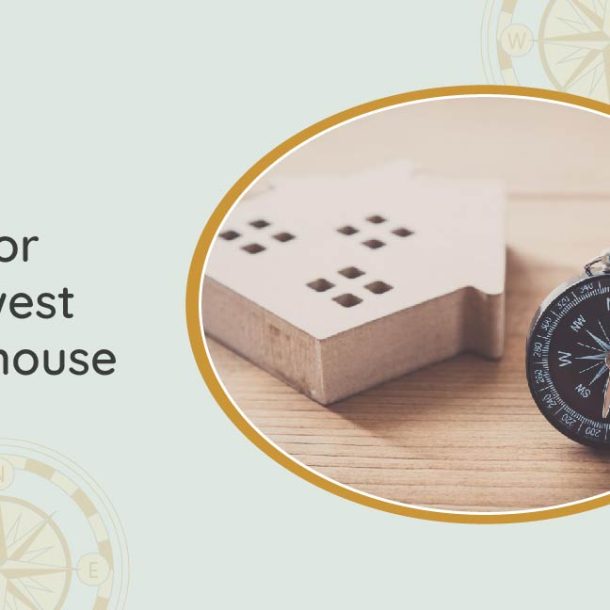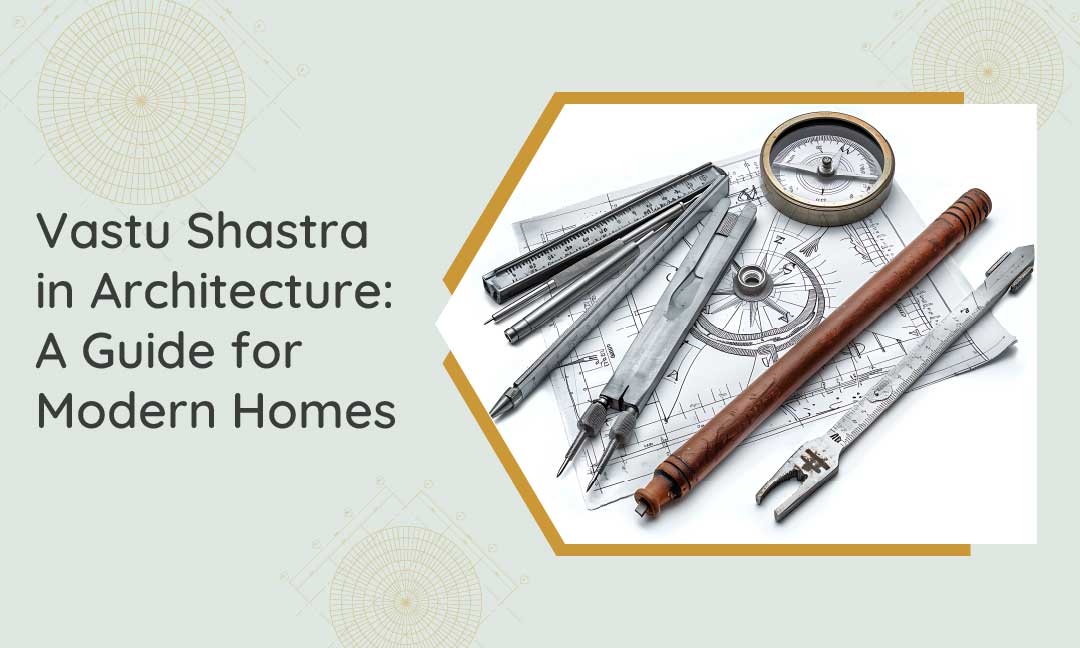

Ancient Indian architecture gave us stunning temples and palaces that have stood for centuries, but can these time-tested principles actually improve how we design modern homes? The response will surprise you.
Vastu shastra in architecture is not how it used to be. Instead, it is about understanding how space planning influences our comfort levels, productivity, and well-being. While modern architecture focuses heavily on form and function, Vastu adds another level to the equation, looking at how the natural elements like sunlight, breeze, and directional orientation influence the people living in those spaces. Let us understand how these old values can control the homes we inhabit today.
Bring positive energy into your home
Connect with our Vastu experts to start your journey toward a harmonious living space today.
A] What Does Vastu Shastra Mean in the Context of Architecture?
In essence, Vastu architecture for houses is the analysis of how the physical environment interacts with natural energies to affect human experience and well-being. Five elements (panchtattvas) serve as the foundation: earth, water, fire, air, and space and how they are manifested in our built world. Planning based on direction gives confidence that spaces align with natural light cycles, prevailing winds, and magnetic directions that can affect everything from sleep patterns to workplace productivity.
The emphasis on balance, symmetry, and flow creates forms that are organically at ease. These concepts, when applied with care, can prevent the energy imbalances that at times lead to sternly function-focused contemporary forms, creating spaces that nurture mental as well as physical wellness through spatial harmony.
B] Why Vastu Shastra is Compatible with Modern Architecture
Here is the misconception that most people harbour: Vastu is not about your home looking traditionally Indian or strictly following rules that compromise good design. It’s truly all about achieving a balance of energy flow, sunlight, air movement, and function in a way that contributes to the welfare of human beings.
With smart planning, even modern or minimalist homes can readily accommodate Vastu principles. Many visionary architects now consider Vastu principles at the very beginning of layout planning stages, and they discover that such considerations actually enhance their imagination instead of stifling it. The key is in understanding that Vastu principles align quite well with what we currently understand as sustainable living, daylighting, and healthy indoor living environments.
C] What Are the Most Significant Vastu Principles for Modern Architecture?
To know how to make a building plan according to Vastu Shastra but with a modern appearance, one needs to pay heed to principles that ensure maximum usability as well as movement.
1. Positioning of Entrance for Energy Flow
Your front door must be imbued with positive energy since it transitions from outside to inside easily. Northeast or north entrances are normally preferred as they receive positive light patterns during the day. Practically, this will make your home look lighter and inviting.
2. Zoning According to Natural Elements
Different aspects of your home are good at different things. A meditation or prayer room would be best placed in the northeast and the kitchen in the southeast, as it is aligned with fire. This isn’t folklore; it tends to align with functional reasons such as morning sunlight for quiet pursuits.
3. Directional Planning for Each Room
Bedrooms perform better in the southwest for stability and good sleep, while studies and offices are well placed in the west or south for focused energy. Living rooms perform better with a north or east orientation for brightness and lightness. These placements generally suit natural circadian rhythms and comfort usability requirements.
4. Room Proportions and Ceiling Height
Vastu calls for a fair proportion that is naturally comfortable. Rooms should never be too narrow or overly long in an unnatural manner, and ceilings need to feel open without feeling cavernous. These rules typically result in rooms that simply “feel right” to the people who occupy them.
5. Natural Ventilation and Sunlight
Cross-ventilation and plenty of natural light are fundamental Vastu principles that coincidentally best resonate with green modern design. Well-placed windows provide air movement while maximising natural light, saving energy, and enhancing indoor air quality.
6. Avoidance of Sharp Corners
Smooth curves and curves with rounded edges create better flow and reduce the jarring edges that would make a room uncomfortable. That principle is fantastic in contemporary design with the application of curved walls, circular furniture and flowing architectural elements.
7. Staircase Placement
Staircases should be positioned so that the energy flow is maintained without overwhelming the central space. In the house building plan with Vastu, stairs will be effective in the west or south, and the middle of the house should be vacant and not congested.
8. Earthy Calming Colour Combinations
Nature colours, soft earthy colour shades, soothing blues, and pale greens induce relaxation by providing calming surroundings to promote well-being. These colours are lovely in contemporary places without weakening the balancing action that Vastu aims to provide.
9. Integration of Nature
Plants, water features, and earthly materials make sure that there is still a connection with the five elements. This is precisely in accordance with biophilic trends of contemporary architecture, thus designing spaces that feel life-like and wholesome.
10. Technology and Modern Utilities
In the design of modern buildings, the tips for Vastu in architecture also focus on the wise location of electrical panels, Wi-Fi routers and home automation devices. This is, to avoid excessive electromagnetic disturbance, yet these machines work very well. The intention is to balance technological convenience with energetic harmony.
D] How Do The Ancient Vastu Ideas Interact With The Modern Building Technology?
The intersection of Vastu knowledge and contemporary building practice is larger than most individuals realise. Natural light focus within the Vastu tradition has become a foundation of green building practices and sustainable architecture. Orientation concerns that Vastu has advocated for centuries are also reconciled beautifully with passive solar design and energy-saving building techniques.
Vastu principles can even be integrated into intelligent home systems through programmable lighting dependent on how it reacts throughout the day and room zoning that optimises every space for its respective use.
Also Read: Vastu For Buying New House – Important Tips
E] How Do the Methods of Vastu Enhance Residents’ Emotional & Mental Health?
Environmental research is becoming more and more familiar with the relationship between the physical environment and mental well-being. Proper placement of rooms according to Vastu can ensure quieter sleeping, reduced family quarrels, and improved focus for work or studying.
Most people will say that Vastu-designed houses merely “feel” more “natural” or “right.” This is a result that can be associated with enhanced energy flow, natural lighting, and spaces suited to natural cycles. In most cases, together with the elemental harmony technique, complementary architecture will result in something that will make it possible to live a healthier and more balanced lifestyle.
F] Vastu Expert, Real Outcomes: How a Vastu Professional Instils Balance into Built Space
Expert consultation with a seasoned Vastu consultant can turn out to be very helpful in gaining insights into space location optimisation, furniture arrangement, and flow direction of energy in already existing buildings. Rather than requiring extensive redesigning, changes are merely small corrections done through natural mechanisms such as plants, mirrors, waterfalls, and strategic lighting.
Professional guidance shall most likely obey present-day interior design, which provides rational solutions to both beauty and healthy equilibrium in your home. The layout of the house as per Vastu can quite often be supplemented by prudent adjustment, keeping in mind both ancient convention and modern demands for living.
Have you faced Vastu issues in your space?
Get an instant solution for your Vastu issues and make your space Vastu-compliant.
Conclusion
New design and Vastu Shastra are not opposite forces; they can produce ravishingly harmonious results if used in the right proportions. Well-designed, a home not only brings outward beauty but also physical comfort and mental alertness. While constructing a new home or redesigning an existing one, taking Vastu as a theme of design may make it more functional while charting a natural course, which simplifies life.
Ready to learn how ancient wisdom can transform your new home? Get in touch with Acharya Geetanjali now to see how Vastu Shastra can help you transform your house into a peaceful haven that is healthy for your mind and body, yet still in keeping with contemporary style.
Vastu Acharaya Geetanjali Bhalla
Greetings, I'm Geetanjali Bhalla your Vastu Consultant serving UK since 2008. I am passionate about blending ancient wisdom with modern living, I specialize in creating harmonious spaces tailored to your unique needs. Let's work together to infuse positivity and abundance into your surroundings using Vastu Shastra and Vedic Astrology. Need help making decisions that align with your goals? Contact us, and let's transform your space!London Area


